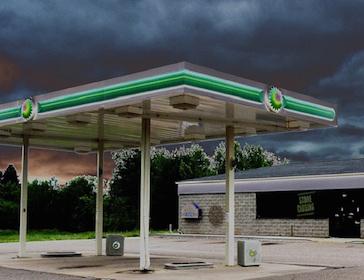By Alex Kirby
Climate News Network
It may come as a shock, as governments ponder how to tackle climate change, to learn that the world is moving rapidly in the wrong direction.
But BP, one of the world’s six biggest oil and gas companies, says it thinks that, on present trends, emissions of CO2 will be 25 percent greater within two decades than they are today.
The prediction is published in BP’s Energy Outlook 2035, which it says is its best effort “to describe a ‘most likely’ trajectory of the global energy system.”
Global consumption
Some of the company’s other projections are hardly less startling. It thinks, for instance, that global energy consumption will be 37 percent greater by 2035 than it is today, with more than half the growth coming from India and China, and virtually all of it from countries that are not members of the OECD − the 34-member group of highly developed countries.
Global energy intensity − which measures the energy efficiency of a country’s economy − in 2035 is expected to be only half of what it was in 1995, and 36 percent lower than in 2013.
The lower the energy intensity is, the less it costs to convert energy into wealth. Even so, global energy use per person is projected to increase by 12 percent, as growing numbers of people demand higher living standards.
Renewables are expected to grow faster than any other energy source, by 6.3 percent annually. Nuclear power, at 1.8 percent a year, and hydro-electric power (1.7 percent) will grow faster than total energy use.
Among fossil fuels, natural gas is expected to grow fastest, with oil marginally ahead of coal. By 2035, China and India will together account for 60 percent of global demand for coal.
“The most likely path for carbon emissions, despite current government policies and intentions, does not appear sustainable”
In a guide to its Energy Outlook, BP (formerly British Petroleum) says it thinks fossil fuels will provide most of the world’s energy needs by 2035, meeting two-thirds of the expected increase in demand by then.
But it is renewables − “unconventional fossil fuels,” and gas, which is the least polluting fossil fuel − that will provide the largest share, while coal grows more slowly than any other fuel.
This, the Outlook says, will be the consequence of slowing industrialization in emerging Asian economies and of more stringent global environmental policies.
To that it might have added the growing pressure for investors to steer clear of putting their money into fossil fuels, for fear that they could be at risk from a robust and rigorously-enforced global agreement on cutting greenhouse gas emissions.
Bob Dudley, BP’s chief executive, writes: “The most likely path for carbon emissions, despite current government policies and intentions, does not appear sustainable.
Scale of challenge
“The projections highlight the scale of the challenge facing policy-makers at this year’s U.N.-led discussions in Paris. No single change or policy is likely to be sufficient on its own.
“And identifying in advance which changes are likely to be most effective is fraught with difficulty. This underpins the importance of policy-makers taking steps that lead to a global price for carbon, which provides the right incentives for everyone to play their part.”
There are already signs that senior officials involved in the UN negotiations recognize the need to dampen expectations surrounding December’s talks in Paris.
The executive secretary of the U.N. Framework Convention on Climate Change, Christiana Figueres, said on Feb. 3 that changing the world’s model of economic development would “not happen overnight and it will not happen at a single conference on climate change.…It just does not occur like that. It is a process, because of the depth of the transformation.”
If BP’s Outlook proves correct, that process may be even longer and tougher than many expect.
+++++
The U.K.-based Climate News Network is run by four volunteers, all veteran journalists who have covered climate change for many years for leading British newspapers and broadcasters and are now freelancing.

